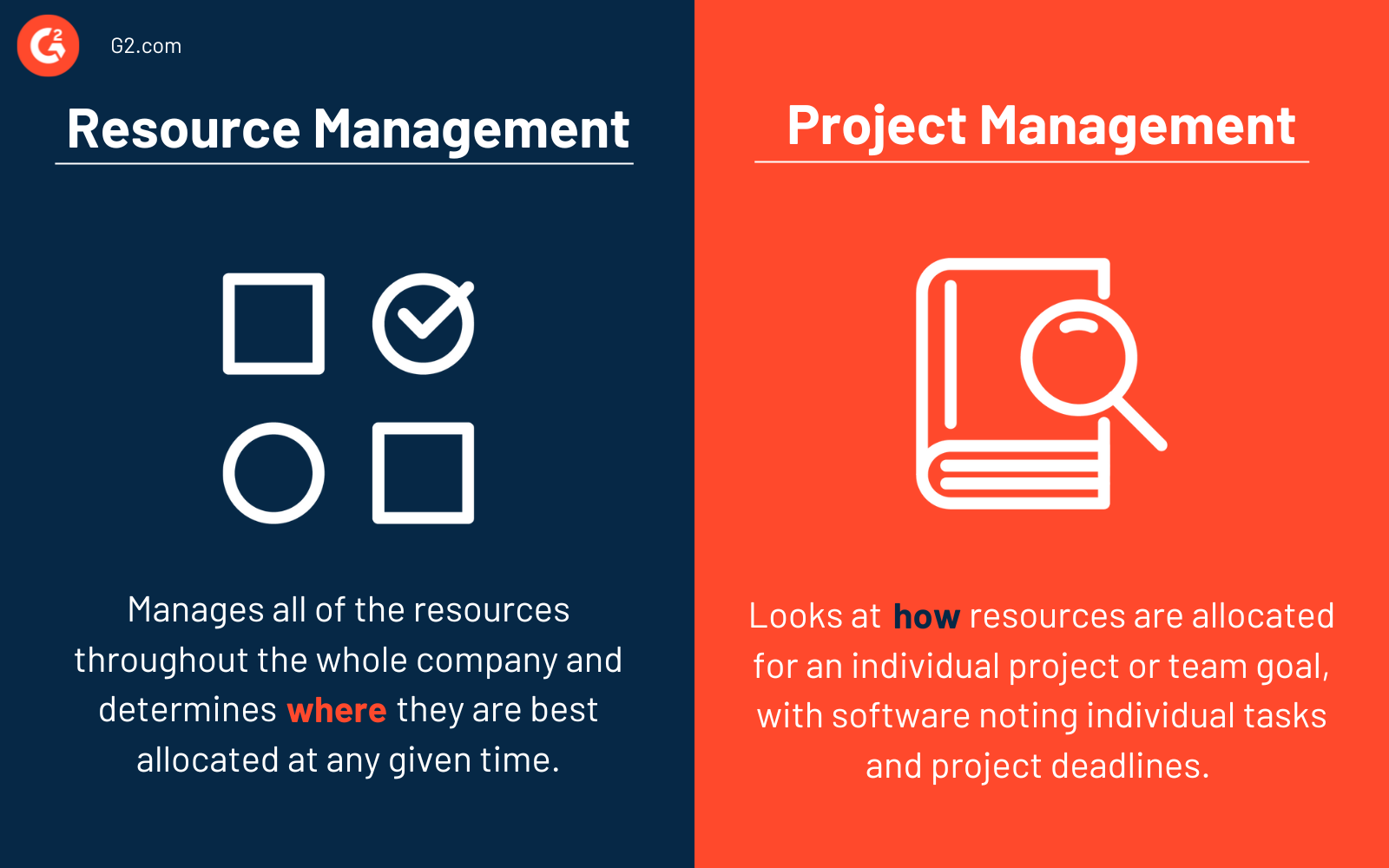What is resource management?
Resource management is the practice of organizing assets, like time and budget, to provide the greatest benefit to the company.
Through strategic planning, scheduling, and allocating of resources, businesses ensure that the right aspects of a project are available when they’re needed, increasing the chance of successfully reaching the desired outcome.
With so many different types of resources within a business, using resource management software is the best way to track and optimize them.
Types of resource management
The kind of management needed depends on the assets a business has and what type of resources need to be distributed.
- Team members. A company’s employees are one of the most important resources. Recruiting efforts are often driven by a need for more team members to handle projects in a scaling business.
- Financial. A good understanding of the budget available helps keep businesses stable and prepared to fund upcoming projects. Moving budget from project to project or department to department to maximize profitability is a critical part of resource management.
- Facilities. Businesses that have multiple building assets, like offices or data centers, should also include those facilities in a resource management platform.
- Digital. Digital assets and resources can be as important as physical resources. If hardware is limited or if software must be shared across the company due to licensing, these resources must be appropriately handled.
- Inventory. Businesses who sell physical products often have a large amount of inventory on-hand. Controlling and optimizing this inventory around regular sales cycles, along with promotional periods, can significantly impact revenue.
Basic elements of resource management
Effective resource management continuously moves according to the four-stage life cycle that determines what needs to happen next.
- Resource analysis. Before any allocation or scheduling can happen, the teams have to analyze current resources. Leadership determines previous performance and availability to plan which resources go where for future projects.
- Resource planning. Teams should record information about individual resources in their resource plan. It ought to include what the resources are, their quantities, and any other general details
- Resource allocation. Deciding where resources are most effective is an ongoing process. Employees may assign resources to a certain project and then reassign them elsewhere if priorities shift.
- Resource scheduling. The resource schedule should show the availability of any resources at any one time. This should fit into project schedules already being used, with shared calendars to determine what elements need to work together for a successful project.
- Resource tracking. The ongoing performance of resources, both those in use and those that may be dormant, should be assessed for reliability and their overall contribution to the business.
Benefits of resource management
There are many benefits to resource management, such as:
- Reducing team member burnout. Efficient management leads to effective team performance. Teams feel more balanced and supported when their time is properly taken care of.
- Avoiding possible issues. Projects always face unforeseen problems, but planning resources for the project in advance can anticipate possible hiccups and deal with them before they happen.
- Building transparency. Centralizing resource management makes everything visible to the wider team. This means that leaders can make the best use of the resources they have and know which ones work well with others.
- Measuring efficiency. When projects go well, tracking resources shows which areas contributed to this success. Alternatively, teams can easily find errors and make corrections ahead of the next project.
Best practices of resource management
How a business chooses to manage their resources depends on what type they have and the types of projects they work on. Generally, best practices that teams should be following include:
- Knowing which resources are in short supply. Running out of a resource or overstretching a team causes substantial problems for a project. Review resources ahead of time and focus on those that need to be replenished.
- Working collectively across the business. When resources are shared across teams, it’s easy for everyone to want to prioritize their own projects. Working collectively to determine what is best for the overall needs of the company and which projects will see greater success is the best way to allocate them for the most positive outcome.
- Account for non-project time. Especially when it comes to resources like team members and their time, administrative tasks also have to be scheduled. Built this time into any agendas.
Resource management vs. project management
It’s common to confuse resource management with project management, but their differences are important.

Resource management is focused primarily on managing all of the resources throughout the whole company and determining where they are best allocated at any given time. This can span multiple projects; the process is often planned out on a bi-annual or annual basis.
Project management looks at how resources are best allocated for a specific project or team goal, using software to note individual tasks and deadlines. Resource management software must integrate with any project management tools when working on a specific project.
Create unified, collaborative teams, wherever they’re located, using virtual workspace software.

Holly Landis
Holly Landis is a freelance writer for G2. She also specializes in being a digital marketing consultant, focusing in on-page SEO, copy, and content writing. She works with SMEs and creative businesses that want to be more intentional with their digital strategies and grow organically on channels they own. As a Brit now living in the USA, you'll usually find her drinking copious amounts of tea in her cherished Anne Boleyn mug while watching endless reruns of Parks and Rec.
